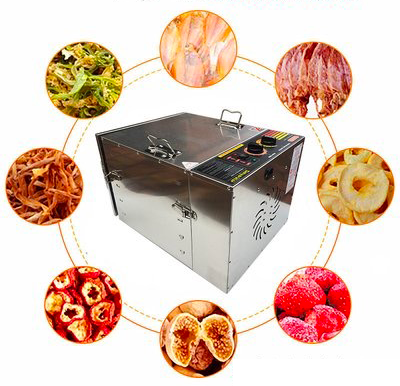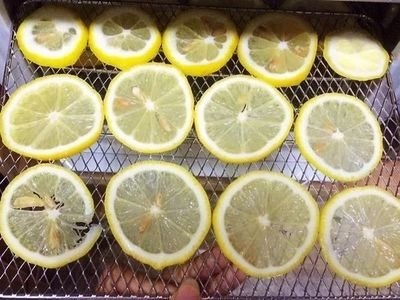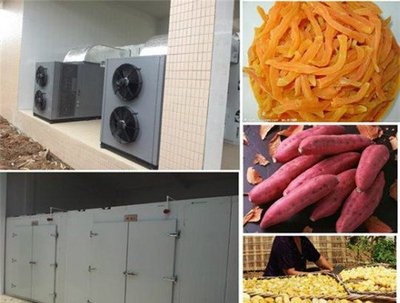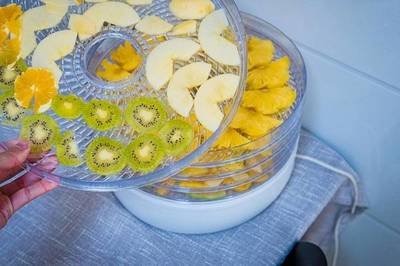
Content Menu
● What is a Heat Pump Dryer?
● Benefits of Using a Heat Pump Dryer for Food Drying
● How Does a Heat Pump Dryer Work?
● Setting Up Your Heat Pump Dryer
● Best Practices for Efficient Drying
● Common Foods Dried Using Heat Pump Dryers
● Advanced Techniques for Food Drying
● Troubleshooting Common Issues
● Conclusion
● FAQ
>> 1. What types of foods can be dried in a heat pump dryer?
>> 2. How long does it take to dry food using a heat pump dryer?
>> 3. Can I adjust the temperature settings on my heat pump dryer?
>> 4. Is it necessary to pre-treat food before drying?
>> 5. How do I maintain my heat pump dryer?
Heat pump dryers have gained popularity in recent years due to their energy efficiency and ability to dry a wide range of materials, including food products. In this article, we will explore how to effectively use a heat pump dryer for drying food, the benefits of using this technology, and best practices to ensure optimal results.

What is a Heat Pump Dryer?
A heat pump dryer is a type of drying equipment that uses a heat pump system to transfer heat from the environment to the drying chamber. Unlike traditional dryers that expel hot air, heat pump dryers recycle and reuse the air within the chamber. This process not only saves energy but also provides a more controlled drying environment.
Benefits of Using a Heat Pump Dryer for Food Drying
- Energy Efficiency: Heat pump dryers consume significantly less energy compared to conventional drying methods. They can reduce energy costs by up to 50%. This efficiency is particularly beneficial for businesses looking to minimize operational costs.
- Gentle Drying: The low-temperature drying process helps preserve the nutritional content and flavor of the food. By avoiding high temperatures, heat pump dryers prevent the degradation of vitamins and minerals, making them ideal for health-conscious consumers.
- Versatility: These dryers can handle various types of food, including fruits, vegetables, herbs, and meats. This versatility allows producers to diversify their product offerings without needing multiple drying systems.
- Environmentally Friendly: By reducing energy consumption, heat pump dryers contribute to lower carbon emissions. They are an excellent choice for companies aiming to enhance their sustainability practices.
How Does a Heat Pump Dryer Work?
The operation of a heat pump dryer involves several key components:
1. Evaporator: Absorbs moisture from the air inside the dryer. As warm air passes over the evaporator coils, moisture condenses on the coils and is collected.
2. Compressor: Compresses the refrigerant gas, raising its temperature. This process increases the energy available for heating the air in the drying chamber.
3. Condenser: Releases heat into the drying chamber while condensing the refrigerant back into a liquid. The hot air circulated within the chamber aids in evaporating moisture from the food items.
4. Expansion Valve: Lowers the pressure of the refrigerant, allowing it to evaporate again. This cycle continues until the desired moisture content is achieved in the food products being dried.
Setting Up Your Heat Pump Dryer
Before using your heat pump dryer, it's essential to follow these setup steps:
1. Choose a Suitable Location: Ensure your dryer is placed in a well-ventilated area with access to power. Adequate airflow around the unit is crucial for optimal performance.
2. Prepare Your Food: Clean and cut your food into uniform pieces to ensure even drying. For fruits and vegetables, removing skins or cores can enhance texture and flavor retention.
3. Load the Dryer: Arrange the food on trays or racks without overcrowding them to allow proper airflow. Overloading can lead to uneven drying and longer processing times.
4. Set Temperature and Time: Adjust settings based on the type of food you are drying. Most heat pump dryers come with preset programs for different food items, making it easier for users to select appropriate settings.
5. Monitor Progress: Check periodically to ensure that drying is proceeding as expected. Some advanced models include sensors that automatically adjust settings based on moisture levels.

Best Practices for Efficient Drying
To maximize efficiency and quality when using your heat pump dryer, consider these practices:
- Pre-Treat Food: For fruits like apples or bananas, consider blanching or dipping in lemon juice to preserve color and flavor. Pre-treatment helps prevent enzymatic browning and enhances overall quality.
- Use Proper Tray Arrangement: Place trays in a way that allows air circulation; avoid blocking vents. Stacking trays too closely can impede airflow and lead to inconsistent results.
- Avoid Overloading: Too much food can hinder airflow and prolong drying time. It's better to dry smaller batches than risk uneven results with larger loads.
- Regular Maintenance: Clean filters and check for any blockages regularly to ensure optimal performance. Keeping components clean helps maintain energy efficiency and prolongs equipment lifespan.
Common Foods Dried Using Heat Pump Dryers
Heat pump dryers are suitable for various foods:
- Fruits: Apples, bananas, strawberries, mangoes, and pears are popular choices due to their natural sugars which concentrate during drying.
- Vegetables: Carrots, bell peppers, tomatoes, zucchini, and green beans can be dried effectively while retaining their flavors and colors.
- Herbs: Basil, thyme, oregano, rosemary, and mint benefit from low-temperature drying that preserves essential oils.
- Meats: Beef jerky, dried fish, chicken strips can be prepared efficiently while ensuring safety through proper temperature control during drying.
Advanced Techniques for Food Drying
To further enhance your food drying process with a heat pump dryer:
- Experiment with Different Textures: Adjusting time and temperature settings can yield various textures in dried foods—from chewy fruit leathers to crispy vegetable chips.
- Flavor Infusion: Consider marinating meats before drying or adding spices to vegetables prior to loading them into the dryer for added flavor profiles.
- Batch Processing: For businesses producing dried foods at scale, consider batch processing techniques where similar items are dried together under optimized conditions tailored for those specific foods.
Troubleshooting Common Issues
While using a heat pump dryer is generally straightforward, some issues may arise:
- Uneven Drying: If some pieces are drier than others, check tray arrangement and ensure adequate airflow around all items.
- Long Drying Times: If items are taking longer than expected to dry, verify that settings are appropriate for the type of food being processed and check if filters need cleaning.
- Odors During Drying: If unpleasant smells occur during operation, inspect food items for spoilage before loading them into the dryer; also ensure that cleaning protocols are followed regularly.
Conclusion
Using a heat pump dryer for food drying offers numerous advantages, including energy savings and improved quality of dried products. By following best practices and understanding how these machines operate, you can achieve excellent results with minimal effort. The versatility of heat pump dryers makes them an invaluable asset in both home kitchens and commercial food production facilities alike.

FAQ
1. What types of foods can be dried in a heat pump dryer?
Heat pump dryers can be used for various foods such as fruits (like apples and bananas), vegetables (like carrots and bell peppers), herbs (like basil and thyme), and meats (like beef jerky).
2. How long does it take to dry food using a heat pump dryer?
The drying time varies depending on the type of food and its moisture content but typically ranges from several hours to a full day; fruits may take 6–12 hours while meats may take longer due to higher moisture levels.
3. Can I adjust the temperature settings on my heat pump dryer?
Yes, most heat pump dryers allow you to set specific temperature and time settings based on what type of food you are drying; this flexibility ensures optimal results tailored to each item's needs.
4. Is it necessary to pre-treat food before drying?
While not always necessary, pre-treating certain foods can enhance color retention and flavor preservation during the drying process; blanching vegetables or dipping fruits in lemon juice are common methods used before drying.
5. How do I maintain my heat pump dryer?
Regular maintenance includes cleaning filters monthly or as needed based on usage frequency; checking for blockages in vents or ducts ensures efficient operation while inspecting seals helps maintain consistent temperatures within the chamber.












